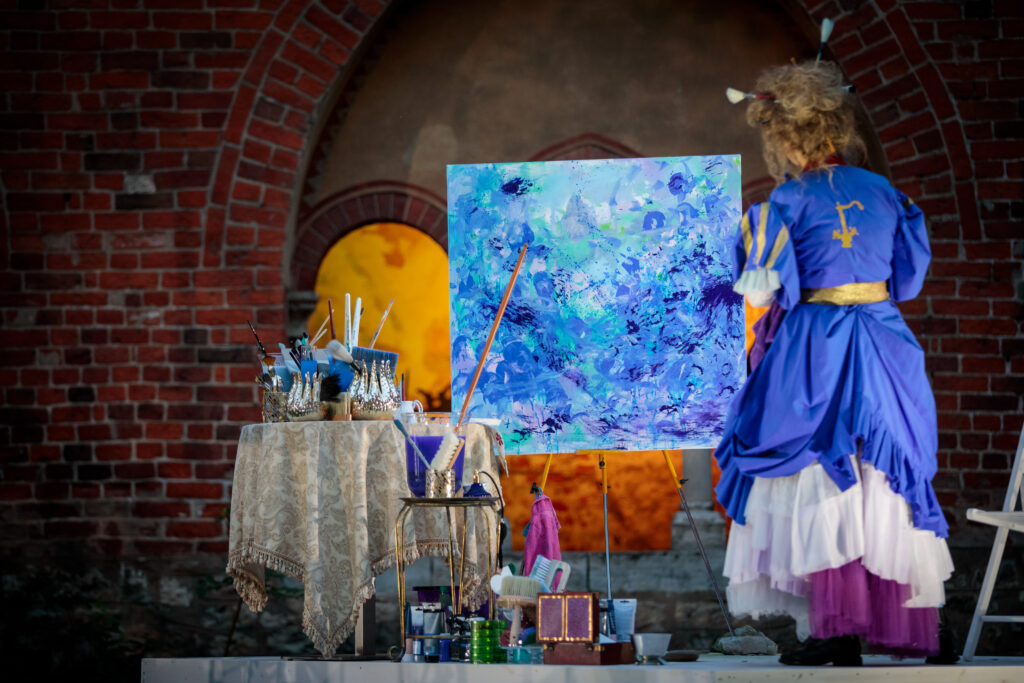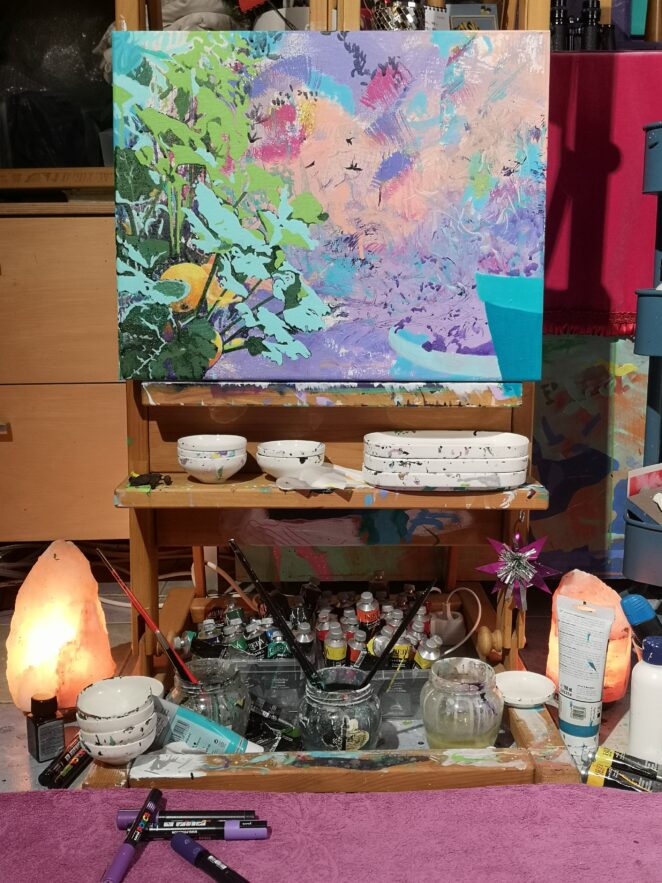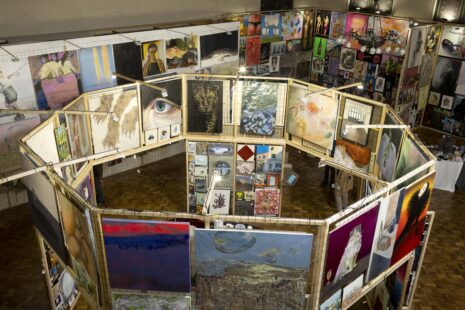A graduate of the Art Academy of Latvia, Kutepova’s artistic journey has been shaped by her deep admiration for nature and her passion for vibrant expression. Her paintings, often inspired by the cycles of life in her personal garden and the seasonal changes in Latvia’s landscapes, transform ordinary moments into meditative reflections. Influenced by her background in floral design and a profound appreciation for traditional Latvian ethnographic heritage, Kutepova’s work seamlessly combines modern artistic techniques with the timeless beauty of her environment.
In this conversation, she reflects on the interplay between imagination and memory in her work, her creative process, and her aspirations to connect with a global audience while staying deeply rooted in her local cultural identity.
Can you share a bit about your daily routine as an artist? How do you balance your personal life and art practice?
Art demands everything—time, space, resources—and, in return, it gives everything back to me. I’ve come to realize that creating is something I need; painting and making art feels essential.
On the other hand, my art practice blends naturally with my personal life, as I love to observe the world around me. My family is incredibly supportive; my husband is a professional guitarist, and we often collaborate on performances together. He improvises in music while I improvise in painting. In fact, the background of my artwork Sun Ball Zucchinis was born from one of these joint performances.
So, my balance between personal life and art practice flows seamlessly.
What is your studio space like? Do you work primarily at home or in a separate studio? How does your environment influence your creativity?
My studio space is in our apartment in a small city by the sea. I love working at home because it allows me the freedom to create whenever inspiration hits—sometimes late into the night until I collapse into bed, or very early in the morning, starting as soon as I wake up. Home is my favorite place, giving me inspiration and strength.
I often capture moments from my home life, which later appear in my artwork. As an artist, my eyes are always open to observe and analyze my surroundings, even if it’s not always conscious. But when I start creating, these impressions naturally come to life in my work.
As an artist in Latvia, what do you find to be the most rewarding and challenging aspects of working here?
Living and working as an artist in Latvia offers a unique blend of peace and a meditative calm that helps me create without stress. This tranquility is wonderful for focusing on my work. However, when it comes time to share my art, the smallness and quietness of this place can feel limiting. I’m starting to realize the need to expand beyond these boundaries, which isn’t easy—it requires an artist to juggle many roles and skills.
Still, I believe that when you’re on the right path and work with passion and love, your art will find a way to break through any challenges.
How does Latvia’s natural landscape and cultural heritage influence your work? Are there specific aspects of Latvian life that find their way into your art?
When I was studying, I often worked in an abstract style and didn’t pay much attention to the real world around me. But after moving to our home near the sea and a beautiful river, and following a transformative journey to India, I began to work in a more realistic style. I even created a series of paintings called Spirits of the River. The natural landscape deeply inspires my art, and my latest passion is my garden, where I observe the life cycles of plants and integrate these moments into my paintings.
I’m also passionate about Latvia’s rich ethnographic heritage, with its vibrant colors and rhythmic patterns in traditional symbols. This is a powerful source of inspiration for artists.
There are some funny moments with gardening, like during zucchini season, when everyone tries to give away their extra zucchinis and pumpkins because they have too many. In the countryside, garden culture brings people together like this—something you don’t often see in big cities.
Who or what has been a significant influence on your journey as an artist? Are there other artists, family members, or mentors who have impacted your approach?
My husband has been a major influence and mentor in my artistic journey. He noticed my early paintings with markers and encouraged me to pursue art more seriously. I grew up in my own world, often playing with plants and exploring nature, which naturally led me to study floral design. I worked in that field for several years, and one of my greatest inspirations was the Estonian floral artist Taivo Piller. His vision and attitude toward his work were so inspiring to me.
After exploring various fields—designing handbags, studying real estate economics—my husband once again nudged me toward art, asking if I wanted to apply to the Art Academy of Latvia. It felt like my own “Hogwarts moment,” and though I was both nervous and excited, I decided to take the leap. I initially studied in the textile department, thinking I might still pursue handbag design, but in my second year, I fell in love with painting. It became my true path, and I switched to the painting department.
During my time at the academy, I was fortunate to receive a grant from the Ināra Tetereva Foundation, which covered my materials and travel expenses. This support allowed me to fully immerse myself in my art, and I learned from many wise and inspiring teachers along the way. It was a period of growth where I began to truly believe in myself and my art.
Your work showcases a strong connection to plants and gardens. Do you have a personal garden or a place in nature where you spend time to recharge or find inspiration?
My connection to plants and gardens began in childhood. I was raised by my grandparents, who kept a beautiful, compact garden. It was magical for me year-round, as I witnessed the cycles of life from an early age. In winter, we ate our own preserved food—jams, teas, fruits, beans—and by early spring, we were sowing seeds and planning our summer crops.
Now, I have my own small “roof garden” in my apartment. I plan the layout, create beds, and even build wooden boxes for my plants. Each year, I carefully select which plants to grow, some of which have been with me for years, while others are new additions. This garden has become a personal sanctuary where I find inspiration and renewal.
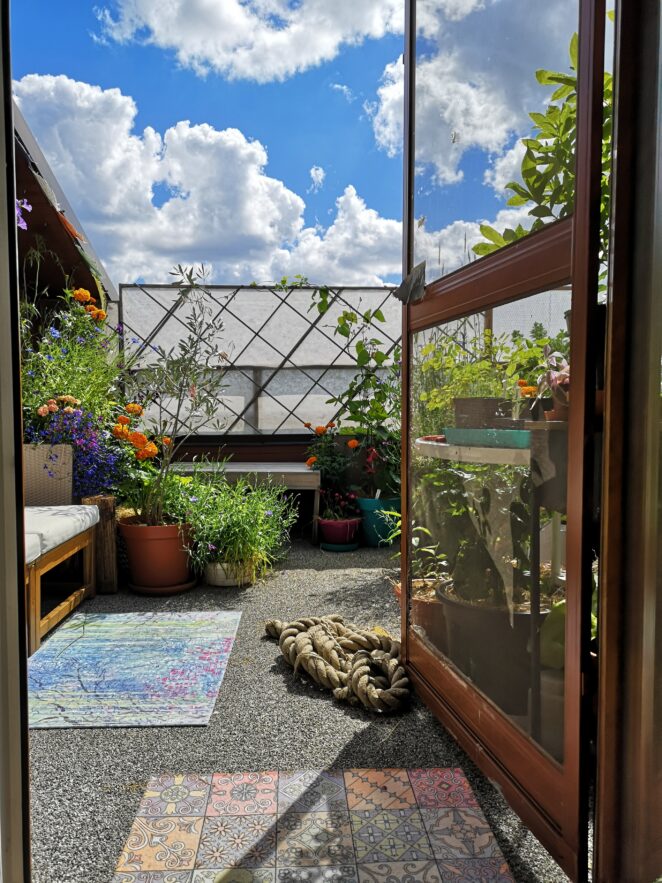
What does a typical day in the studio look like for you? Do you have a specific process or ritual you follow when you start working on a new piece?
My typical day in the studio varies by season. In the summer, my mornings begin with an expedition in my garden, where I check on my plants and water them. I find this calm start essential for preparing for the day ahead. Candles and light play a significant role in my process; I have two salt lamps that guide me as I work. My assistant, my cat Minmin, is always by my side. In winter, I venture outside to capture moments for my new collection, Winter Spirit, while in summer, I focus on garden and plant life. When beginning a new piece, I clean my space, light a new candle, and contemplate the canvas, envisioning how it will look. Sometimes music is necessary, but at other times, I prefer a quiet atmosphere.
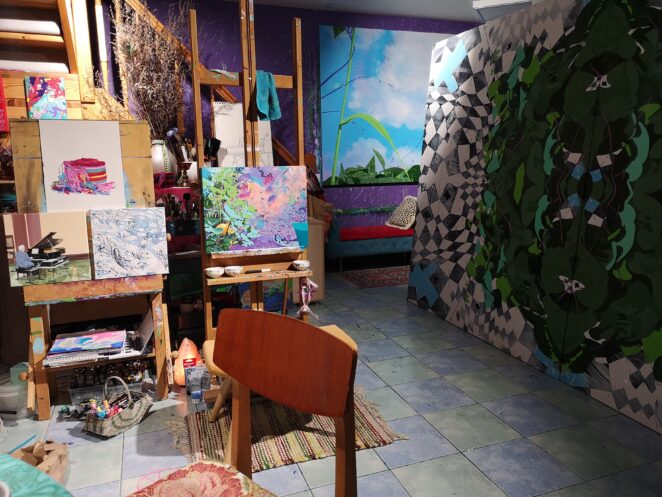
In your opinion, how has the art scene in Latvia evolved over recent years, especially for emerging artists? Are there good support systems, or is it challenging to establish oneself as a young artist?
In my opinion, the art scene in Latvia is still in its infancy, particularly for emerging artists. It can be quite challenging to establish oneself in the art world. I have been fortunate to have excellent mentors on my journey to becoming a full-time artist, but I’ve witnessed many talented colleagues struggle for recognition. It saddens me that there are limited support systems, serious galleries, and passionate curators to guide artists. This scarcity has led me to seek help abroad, as I want to continue in art, which I believe is my true calling. I hope that one day, we will have stronger support in Latvia, but the need to survive has become pressing. Additionally, the lack of exhibition spaces, such as a modern art museum, poses challenges for artists. The art market is small, making it essential for artists to seek international opportunities, yet the atmosphere remains quiet. While some artists do manage to gain recognition, it remains a painful reality.
Looking forward, are there particular themes or projects you hope to explore in your work? Do you see yourself continuing with the garden and nature themes, or are there new directions you’re interested in?
I’m dreaming of exploring the entire life cycle of garden themes and the Spirit of River themes in my work. In my parallel reality, I envision an exhibition dedicated to meditation and our inner world. I love painting alongside musicians on stage; sometimes it’s pure improvisation, while other times I prepare a few steps in advance. These moments are thrilling and exciting! I am also eager to go abroad for a significant exhibition of my works because I feel ready to share my art with a wider audience.
What advice would you give to young or emerging artists in Latvia who are just beginning their careers? Are there key lessons you’ve learned along the way that you’d like to share
I’ve learned that when you’re on the right path, doors will open, although some may close. As my teacher advised, if doors are closed, try coming in through the windows. For young artists, it’s vital to be active in your academy—be open, friendly, and trust yourself! Social media is a powerful tool, especially for emerging artists.
What is it about plants, particularly your “Indigo Pearl” tomatoes and “Sun Ball” zucchinis, that inspired you to create such vibrant portraits?
Over the years of observing my plants, I’ve noticed how supportive tomatoes are; their leaves wrap around each other as if holding one another up. This communal strength allows them to grow. The variety of tomatoes available today is vast, but Indigo Pearl is one of my favorites, with its stunning orange and purple hues. This painting came to life without hesitation. My Sun Ball zucchinis were the first round zucchinis I grew in my roof garden, so they definitely deserve a portrait. Both plants attract bumblebees, which I adore. It’s delightful to see these fluffy creatures that seem large yet can fly. Interestingly, bumblebees are the only pollinators for tomatoes. Initially, I tried to attract them with fresh flowers, but now they know where to come!
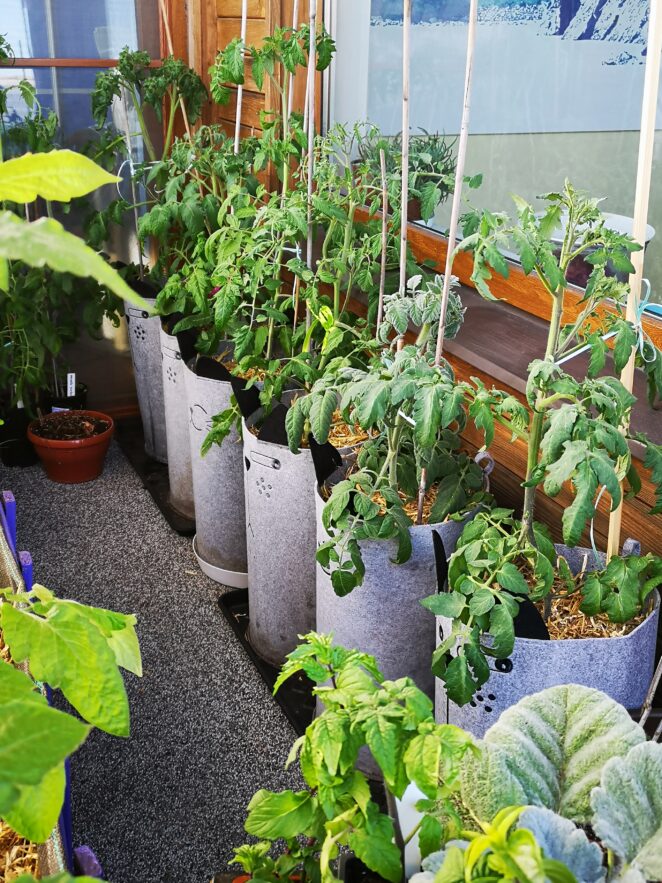
You mention growing these plants from seeds. Can you tell us more about how this process influenced your connection to each subject and ultimately your portrayal of them?
Seeds are a crucial part of the gardening process; I dream of the new gardening season as I plan my plants. This year, I grew a wild tomato, the ancestor of the tomatoes we know today, which has sparked my passion for gardening anew. Last year, I cultivated eucalyptus, which provides strong, healthy tea during winter. I liken planting seeds to starting a new painting—both begin with examining my tools, colors, and photographs, followed by the choice of direction. A seed is a universe captured in a tiny object; as water is poured and soil fills up, the process begins. This parallels the creative process, where plants and paintings become intertwined. My paintings capture moments and stories, just as plants create seeds for future life. When viewers engage with my artwork, it becomes a new life form, similar to how seeds wait for spring and rain.
Your paintings reflect objects from a summer house, like chairs and brooms, in a cozy yet slightly chaotic way. What story or feeling do you hope these objects bring to your viewers?
My work serves as a tribute to sunny childhood memories, evoking colorful, slightly whimsical, sweet, and safe feelings. When choosing subjects for my paintings, I think in terms of symbolism. I believe that physical and mental clarity in a space is vital, which is why brooms are among my favorite symbols. Chairs, too, are beloved subjects for many artists, symbolizing welcome and presence. However, everything is in constant flux—our bodies, landscapes—making chaos a representation of change. The only constant is the viewer within us.
In “Spirit of the Garden, Rainbow,” you capture the moment of a rainbow appearing after summer rain. Do you see this work as a way to capture fleeting moments of beauty in nature?
Fleeting moments surround us every second. Art is one tool to immortalize these moments, even though we know it’s impossible to fully capture them. When you look at my painting, your memory might transport you back to that moment, which is both fascinating and amusing. Artists strive to seize the past and bring it into the future, embodying that feeling of a bright pink light after warm rain and the vividness of a rainbow.
“Spirit of the Garden House” immortalizes a house that no longer exists. Can you share your thoughts on preserving memories or spaces through painting? How did you feel about the house’s significance in your life and your work?
In my city, we can rent small plots for gardening. Sometimes the owners change, which alters the landscape and experience of gardening. It’s intriguing to see how individuals create their own small houses without future plans. My garden collection began with these individual houses, which sparked the possibility of one day owning one myself. I’ve been renting a plot for four years, known in Latvian as a “small garden.” When I noticed a particular house had vanished, I found solace in knowing I had captured it in my painting. This encouraged me to visit my grandparents’ childhood garden, which they sold many years ago. I found the house still standing, painted in the same yellow, while many greenhouses were gone. Some trees thrived, while others faded. I’m grateful I visited; it allows me to continue on my path, inspired by those vivid memories that will undoubtedly find their way into my new artwork.
Your work features incredibly vibrant colors. How do these bright colors connect to your view of nature and life? Are they meant to evoke a specific atmosphere or emotional response?
The vibrant colors in my work stem from my childhood. My first memory is tied to colors, like a bright green baby carriage with orange details. While I also appreciate black and white, colors are my primary tool for expression. When painting plants, I often wonder how they perceive the world—perhaps they see it as more vibrant and bright. I believe color possesses healing properties; it can conceal, reveal, and deeply affect us. Colors should evoke the emotions that the artist intended.
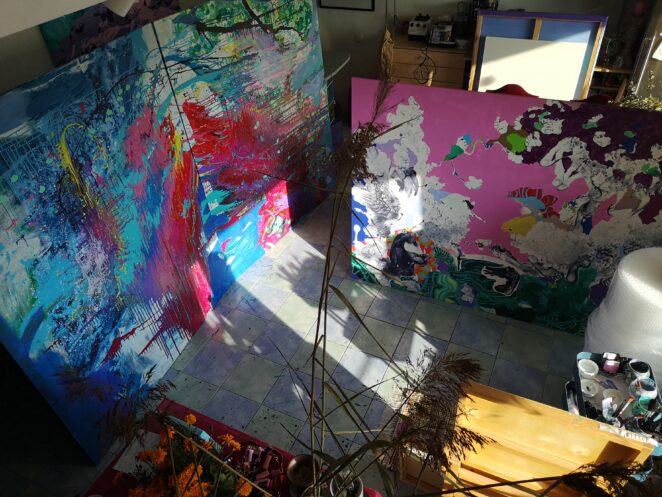
How do you decide which elements from your imagination to bring into each piece? Is it a spontaneous process, or do you have a vision from the beginning?
My creative process can be spontaneous, but there are times I have a clear vision of how a piece should look. I embrace freedom in the creation process. The artwork often guides me, and the feeling or idea I wish to convey influences my approach.
Can you talk about the relationship between imagination and memory in your paintings? How do they work together to create the compositions we see?
I find it challenging to separate imagination from memory, as I’m constantly observing information. Imagination often manifests in abstraction, while memories connect to known experiences. The mind analyzes and synthesizes these elements into a cohesive composition. Sometimes, my abstract expressions provide clarity, revealing what I should do and how to complete the piece. This process mirrors the life cycle of seeds; starting in darkness, there’s an impulse that bringas them to life. I paint this to express gratitude for the insight they offer
In your exhibition “Spirit of Garden,” do you feel that each work is a standalone piece, or do they form a narrative when viewed together? What is the ‘spirit’ you aim to convey with this collection?
My works form a narrative when viewed together, yet each piece can also stand alone, depending on the context. I believe that everything possesses spirit or energy, regardless of the name we use. When I recognize that each collection carries its emotional background, the spirit of the collection becomes evident. Often, the name of the collection emerges as I capture the feeling I wish to convey. With this collection, I aim to express the excitement of plant growth and the joy of living, embodied by vibrant colors.
Are there other garden plants or summer house objects you plan to paint in the future? What draws you to these simple, everyday elements as subjects?
Yes, I have many ideas waiting to be realized, but it takes time to bring them to fruition. My goal is to depict the full life cycle of plants; currently, my work showcases summer and hints of spring, but I’m eager to explore what these plants look like in autumn and winter. To me, plants embody life and hold equal significance to everything around us. I also have a collection of indoor plants that I’m excited to explore further. I’m eager to see what the future brings!
Kristine Kutepova artworks on NOBA
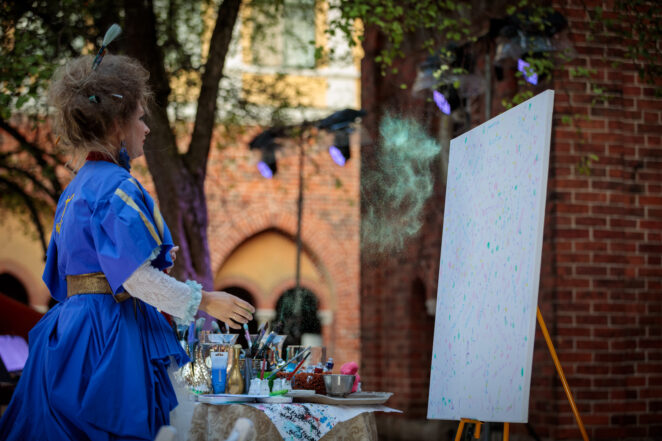
Photo Marite Melnika

